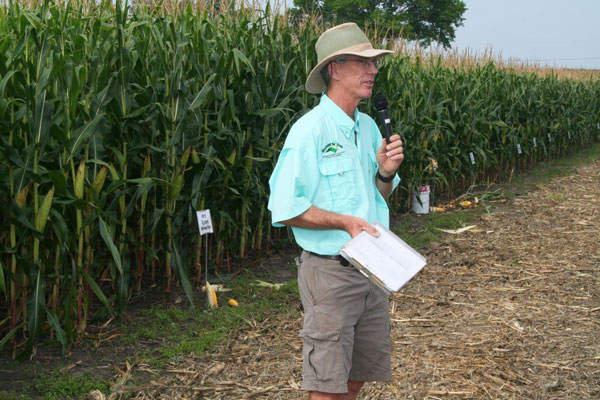August 19, 2013

Rainfall throughout most of North Carolina has been at record high levels this growing season, with some areas receiving more than 30 inches.
Most of the state’s crops have struggled because of poorly developed root systems. Because of this agronomists are warning that the growth of upcoming crops is also likely to be affected unless soil-nutrient reserves are monitored and replenished.
David Hardy, chief of the Soil Testing Section with the North Carolina Department of Agriculture and Consumer Services, and Carl Crozier, soil science professor and Extension specialist at North Carolina State University, urge growers to be particularly vigilant about soil sampling this summer and fall.
“Our sandy, light-colored soils have limited ability to hold nutrients to begin with,” Hardy said. “And some of our nutrients are what we call ‘mobile in soils,’ simply meaning they move with excessive water through the soil. Farmers are more familiar with the term ‘leaching.’
“Potassium, nitrogen and sulfur are the most mobile nutrients,” Hardy said, “but even nutrients such as magnesium, which is held more tightly than potassium, can be depleted due to excessive rainfall. This year growers across the state really need to check the nutrient status of soils by soil testing.”
Crozier agrees with this recommendation, but points out another effect of wet soils on nutrient availability. “Poorly drained soils may have been flooded for long periods,” he said. “The problem in areas where water has been standing is more likely to be denitrification than leaching. In that case, nitrogen is lost as a gas to the air.
“Growers need to remember that routine soil testing does not measure soil nitrogen levels,” Crozier said. “The nitrogen recommendations given on a soil-test report represent the typical needs of the crop and do not take into account that residual nitrogen levels might be even lower than expected given the weather this past season.”
Consider soil acidity
Another fertility issue to consider is soil acidity. In North Carolina, factors such as weather and the leaching of nutrients make soils naturally acidic. Soil pH and lime recommendations are two of the most important items of information provided on a soil-test report.
“On especially sandy soils, I expect there may have been considerable changes in pH over the past four to five months,” Hardy said. “If a field was borderline in needing lime last year and none was applied, it definitely needs to be tested this year.
“This was one of the wettest growing seasons I can remember. Growers whose crops drowned or rotted may want to forget this past season, but they need to let it remind them that soil testing in the coming months is not optional.”
Growers planning to plant small grains this fall are especially urged to sample ahead of that crop. The sooner samples are submitted to the department’s soil-testing laboratory, the sooner recommendations can be implemented to get the crop started off with the best fertility possible.
For samples received until mid-November, soil test results are free and the turnaround time is generally two weeks.
Beginning this fall, a peak-season fee of $4 per sample will be charged for all soil samples processed from Nov. 28 through March 31. From April until the Thanksgiving holidays, no fee will be imposed.
The North Carolina General Assembly approved the peak-season fee in its most recent appropriations bill.
Imposition of the peak-season fee will trigger some changes in the way soil samples are handled, submitted and paid for. Information on these changes will be available online at http://www.ncagr.gov/agronomi as they are implemented. Growers are urged to avoid the fee by submitting samples early.
NCDA&CS regional agronomists provide advice on how to collect and submit agronomic samples to alleviate nutrient problems. For contact information, visit www.ncagr.gov/agronomi/rahome.htm.
More from Southeast Farm Press
Peanut diseases surge in areas of excessive rainfall
Soybean rust showing up a month early in north Alabama
Demand heavy for stocker calves, yearling cattle
Tennessee's agritourism industry getting bigger
You May Also Like




